New England's Book of Acts
WHAT IS IT?
New England’s Book of Acts is a publication of the Emmanuel Gospel Center (EGC) that captures the stories of how God has been growing his Church among many people groups and ethnic groups in New England.
WHERE IS IT?
An online version of the book is available here.
HOW AND WHY WAS IT WRITTEN?
Intercultural Leadership Consultation 2007
Between 2000 and 2007, EGC collaborated with various church groups and leaders to compile stories, articles, and resources that help tell the story of what God is doing in New England. Then on October 20, 2007, EGC convened the Intercultural Leadership Consultation, a one-day conference to share the stories captured in New England’s Book of Acts. Four hundred leaders from over 45 ethnic and people groups around New England gathered to learn and celebrate. These included Christian leaders who were Puerto Rican, Colombian, Haitian, Brazilian, Czech, Egyptian, Malawian, Ugandan, Ghanaian, Liberian, Indian, Bengali, Indonesian, Filipino, Cambodian, Chinese, Japanese, Korean, Mashpee Wampanoag, and Massachusett Natick Indian. Each participant was given a copy of the book.
WHAT’S NEXT?
Updates. In the ten years since publication, there has been some limited updating and editing to the material, and yet, as time goes by, these organic church systems continue to grow and change, so there are many more stories to be told. As these stories are updated, they will be made available here.
We are currently working on these updates, which will be posted soon. When they are posted, we will add the links:
WHAT’S IN THE ORIGINAL BOOK?
Section One
Section One provides an overview of some of the ways God has worked among people who came to Boston and New England and offers a framework to guide our thinking. Research on past revivals and the current Quiet Revival help us gain perspective and look forward to what God will continue to do here. Hopefully, these articles will expand our vision of the Kingdom of God here in New England.
Some of the topics covered in Section One are:
Seeing the Church with Kingdom Eyes
What is the Quiet Revival?
History of Revivalism in New England
Five Stages of Sustained Revival
Additional helpful resources along this line are:
The Quiet Revival: New Immigrants and the Transformation of Christianity in Greater Boston (2014). Basing much of her research on New England’s Book of Acts, Marilynn Johnson, professor of history at Boston College, has written a 28-page paper on the Quiet Revival which was published in Religion and American Culture, Summer 2014, Vol. 24, No. 2. To read it online, click here.
Section Two
Section Two gives examples of how God is at work among the churches of New England. Many of these 24 reports were written by leaders from within the various groups. Others were produced by the Applied Research staff at EGC. This section also includes reports on multicultural churches, international student ministry, and more. Of course not every church or ministry group has been mentioned in this publication. However, there is enough information for users to connect with many various streams, and inspiration to develop stories on those that are not mentioned here. We would love to hear from you if you pursue research on another group among New England’s church streams.
Section Three
Section Three offers a rich selection of articles on topics like leadership development, evangelism, church planting, youth and second generation ministry, diaspora ministry, and social ministries. Some of these selections describe models of ministry in these areas, while others give nuggets of wisdom from experienced leaders. We hope those who also face similar challenges in developing leadership, reaching youth, and meeting other needs, can use these ideas and models.
TAKE ACTION
Questions? If you have questions about New England’s Book of Acts, don’t hesitate to be in touch. Or if you would like to help us continue telling the story of God’s work through the various people streams in New England, we would love to hear from you.









We need to more clearly identify the prophets in current-day Boston and enlist their participation as we seek to expand Jesus-permeated, Kingdom-of-God-on-earth-permeated, church-planting movements